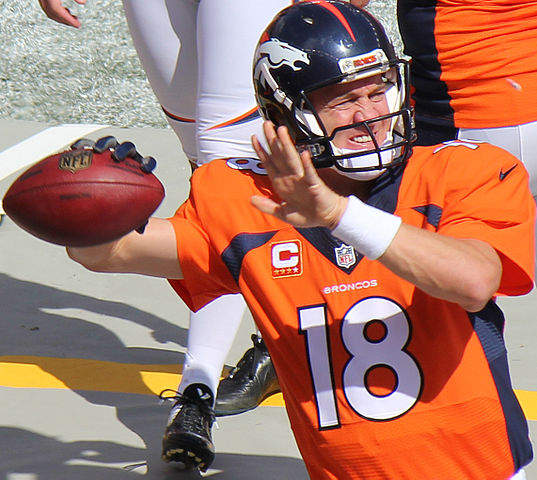Another Verbal Threshold Hurdle
On February 26, 2009, the New Jersey Supreme Court decided, in the case of Agha v. Feiner, that a plaintiff cannot get over the “verbal threshold” if a physician qualified to interpret an MRI does not testify at trial, in cases where the MRI is the only “objective clinical evidence” of an injury enumerated as satisfying the “verbal threshold” in the Automobile Insurance Cost Reduction Act (“AICRA”).
When New Jersey drivers purchase auto insurance, they are asked to select either the “verbal threshold” (also known as the “limitation on lawsuit threshold”) option or the “zero threshold” (also known as the “no limitation on lawsuit threshold”) option. If the driver purchases the “zero threshold” option, there is no limitation on that driver’s ability to sue for so-called “noneconomic damages” or “pain and suffering” if that driver were to be injured in an automobile accident. However, if the driver selects the “verbal threshold” option, the driver can only sue for “noneconomic damages” or “pain and suffering” in certain circumstances.
If a driver who is subject to the “verbal threshold” is injured in an auto accident, that driver must submit a certification by a physician stating that, based on “objective clinical evidence,” the driver has suffered one of the injuries listed in AICRA. These injuries include: death and dismemberment, significant disfigurement or scarring, a displaced fracture, a loss of a fetus, or a permanent injury. An injury is permanent if it “has not healed to function normally and will not heal to function normally with further medical treatment. A personal injury lawyer or auto accident lawyer can be very helpful in helping an injured driver determine whether the “verbal threshold” applies to their case and whether their injuries overcome the bar set by the “verbal threshold.”
In Agha v. Feiner, plaintiff Mahmoud Agha suffered a herniated disk when a vehicle in which he was a passenger was struck from behind, while stopped at a red light, by a vehicle driven by defendant Feiner. Mr. Agha filed a lawsuit seeking compensation for his injuries. At trail, Mr. Agha testified that he had suffered a herniated disk. In addition, Dr. Thomas Ragukonis, an anesthesiologist and pain management expert, and Dr. Adam Awari, a chiropractor, testified on Mr. Agha’s behalf. Dr. Ragukonis testified about the results of an MRI performed on Mr. Agha, which showed that Mr. Agha had suffered a herniated disk. The MRI was the only “objective clinical evidence” that Mr. Agha had suffered a “permanent injury.” In other words, without the MRI, Mr. Agha, who was subject to the “verbal threshold,” would not be able to show that his injury surpassed the “verbal threshold.”
When Dr. Ragukonis testified about the results of the MRI, the defense objected because Dr. Ragukonis did not personally read the MRI film. Instead, Dr. Ragukonis relied on an MRI report prepared by Dr. Rod Default, the radiologist who read the MRI film. The attorney for the defendant objected, and argued that Dr. Ragukonis should not be permitted to testify about the results of the MRI because he did not personally read the MRI film. The attorney for the plaintiff argued that Dr. Ragukonis relied on MRI reports as part of his pain management practice, and therefore should be permitted to testify about the results of the MRI as discussed in the report. The trial judge agreed with the plaintiff and permitted Dr. Ragukonis to testify about the results of the MRI. The jury awarded Mr. Agha $80,000 as compensation for his injuries.
The defendant filed an appeal with the New Jersey Superior Court, Appellate Division. The Appellate Division disagreed with the trial judge and reversed his decision. The Appellate Division held that, while an expert who is either not qualified to read MRIs or did not in fact read an MRI film can testify that the MRI report of a radiologist forms one of the bases for his opinion, the testimony cannot be used as substantive proof of the existence of the condition shown in the MRI. Since the MRI was the only “objective clinical evidence” of the herniated disk in this case, the Appellate Division ruled that the case should be dismissed as not overcoming the “verbal threshold” under AICRA.
Mr. Agha appealed the Appellate Division’s decision to the Supreme Court of New Jersey. The Supreme Court agreed with the Appellate Division and decided that, while a testifying expert can refer to a hearsay statement (such as an MRI report) to inform the jury of the bases of his opinion, the plaintiff cannot use that testimony as the sole proof that his injury overcomes the “verbal threshold.” However, because Mr. Agha was lulled by the trial court into believing the radiologist did not need to testify, the Supreme Court remanded the case back to the trial court for a new trial.
The result of this case is that in future cases, a plaintiff and his or her personal injury lawyer or auto accident lawyer will have to secure an expert (e.g. a radiologist or orthopedist) who is qualified to read films such as MRIs or x-rays, and who did, in fact, examine the plaintiff’s MRI or x-ray films, to testify at trial if the plaintiff wants to use an MRI or x-ray as substantive proof of an injury. If the plaintiff does not produce an expert qualified to read MRI or x-ray films, the plaintiff’s case can be dismissed if the film is the only “objective clinical evidence” that the plaintiff has suffered one of the injuries enumerated by AICRA as overcoming the “verbal threshold.”

